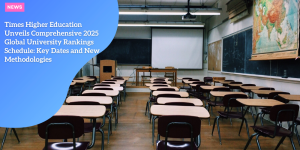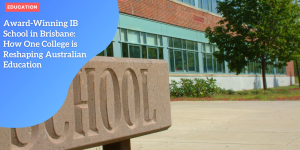Key Areas Requiring Improvement ⚠️
Despite concerted efforts to improve the support systems for autistic students, significant gaps still persist.
Notably, a recent study by the University of South Australia highlighted three critical areas that require immediate attention: social integration and peer relationships, understanding of autistic students’ needs by school staff, and the adaptation of physical environments to address sensory sensitivities.
Social Integration and Peer Relationships 🤝
Autistic students often struggle with social integration and building peer relationships.
The study surveyed 225 autistic students aged 10-14 and revealed that many find it difficult to fit in at school and develop positive relationships with their classmates.
Peer relationships are crucial as they foster a sense of belonging and significantly impact the overall school experience.
However, social challenges, coupled with high levels of bullying, leave many autistic students feeling isolated and misunderstood.
To address these challenges, schools must prioritize social inclusion initiatives.
Creating buddy systems, social skills training programs, and organized peer support groups can help autistic students feel more connected and less isolated.
Schools must also educate non-autistic students about autism to foster a more inclusive and accepting environment.
Understanding by School Staff 📚
A well-informed and compassionate teaching staff plays a pivotal role in creating a supportive educational environment for autistic students.
However, the study indicates a pressing need for school staff to better understand the needs of autistic students.
Teachers and administrative personnel need tailored training to recognize and respond appropriately to the unique challenges faced by autistic students.
This understanding goes beyond academic support and extends to the emotional and social aspects of a student’s school life.
Professional development for teachers should include comprehensive training on autism spectrum disorders, focusing on communication strategies, behavior management, and the creation of flexible learning environments.
When school staff are well-equipped with this knowledge, they can foster a sense of safety, respect, and inclusivity for all students.
Physical Environments and Sensory Sensitivities 🌟
Physical environments in schools can be overwhelming for autistic students, particularly due to sensory sensitivities.
The study emphasizes the need for adapting school environments to better accommodate these needs.
Noisy, crowded areas, and unpredictable routines can lead to heightened anxiety and disengagement in autistic students.
Creating sensory-friendly spaces within schools can significantly enhance the learning experience for autistic students.
This can include quiet zones, flexible seating arrangements, and the use of calming colors and lighting.
Schools can also implement structured routines and minimize sensory overload by managing noise levels and reducing clutter in classrooms and common areas.
By addressing these key areas, schools can make substantial strides in improving the educational experiences of autistic students.
While there has been progress, these findings highlight the continued need for enhanced support systems and more inclusive environments.
The next steps involve further investment and ongoing efforts to create truly inclusive schools where every autistic student can succeed academically and socially.
Impact of Supportive School Environment 🌱
Positive Relationships with Teachers
Positive connections with teachers play a pivotal role in the well-being of autistic students. When students feel genuinely understood and supported by their teachers, it cultivates a sense of safety and respect.
Dr. Kobie Boshoff from the University of South Australia emphasizes that teachers who adapt their methods for different learners, communicate effectively, and promote respectful interactions significantly improve autistic students’ well-being.
Such relationships can help reduce instances of bullying and social difficulties, which are commonly reported challenges among autistic students.
Flexible Learning Strategies and Clear Communication 🗣️
Implementing flexible learning strategies and clear communication methods can greatly enhance student engagement.
Teachers who genuinely understand and accommodate the unique needs of autistic students can create a more inclusive and productive learning environment.
For instance, breaking down tasks into manageable steps, using visual aids, and providing additional time for assignments can make a significant difference.
These approaches not only support autistic students in managing their academic load but also boost their confidence and participation in class.
Structured Support and Sensory-Friendly Spaces 🏫
The physical and social environments in schools are critical to the inclusion and comfort of autistic students.
Sensory-friendly spaces and structured support systems can alleviate anxiety and enhance focus.
Creating quiet areas, offering predictable routines, and minimizing sensory overload through reduced noise and lighting adjustments are practical steps schools can take.
Such adaptations allow students to better manage their sensory sensitivities and engage more effectively in their educational experiences.
These initiatives emphasize the importance of continuous development in educational practices to adequately support autistic students.
As efforts continue toward creating safe and inclusive environments, the unique needs of every autistic student must be a priority.
Current Progress and Initiatives 🔍
National Autism Strategy
The Federal Government has made a substantial commitment to support autistic students with the introduction of the $42.3 million National Autism Strategy for 2025-2031.
This strategy is designed to create a safer and more inclusive society where all autistic individuals can thrive.
By focusing on the unique needs of autistic students, the strategy aims to implement widespread changes in the educational system to foster better integration and support.
This significant investment signals a commitment to long-term change, emphasizing the importance of adapting to the evolving needs of autistic students.
Autism Inclusion Teachers Trial 🧑🏫
South Australia has taken proactive steps with a $250,000 state government trial to introduce Autism Inclusion Teachers (AITs) in nine public high schools.
This initiative recognizes the need for specialized support and aims to bridge the gap between mainstream education and the unique needs of autistic students.
AITs are trained to understand and address the sensory sensitivities and social challenges faced by these students.
Their presence in schools is expected to foster a more inclusive environment by promoting acceptance and understanding among all school staff.
Investment in Practical Solutions for Autistic Students
| Solution |
Description |
| Flexible Learning Strategies |
Breaking tasks into manageable steps, using visual aids, and allowing students to work at their own pace to accommodate different learning styles. |
| Structured Support |
Providing clear communication and predictable routines to help students understand expectations and reduce anxiety. |
| Sensory-friendly Spaces |
Creating quiet areas for students to retreat to manage sensory overload, with physical environments that cater to sensory sensitivities. |
These initiatives highlight the ongoing investment in creating supportive and accommodating school environments.
However, to maintain this progress and make it more widespread, continuous support and adaptation are essential.
Schools must not only implement these strategies but also regularly assess and evolve them to meet the dynamic needs of autistic students.
It is crucial for schools to commit to this journey of inclusivity, ensuring that every student feels valued and empowered.
By embracing these changes and investing in the necessary resources and training, educational institutions can make significant strides toward an inclusive future for all students.
Future Recommendations and Call to Action 📅
Continuous Support Throughout the Educational Journey
Ensuring continuous support for autistic students throughout their educational journey is crucial.
Many students experience evolving needs as they progress through school, and it’s essential that the support they receive adapts accordingly.
Often, there is a misconception that older students require less support, whereas they may simply need different types of support.
By providing tailored resources and maintaining long-term strategies, schools can help autistic students thrive academically and socially at each stage of their education.
Increased Funding and Professional Development for Staff 💰
For a truly inclusive educational environment, schools need increased funding and robust professional development programs for their staff.
Educators and school personnel must be equipped with the knowledge and skills necessary to comprehend and satisfy the diverse needs of autistic students.
Professional development initiatives should focus on:
-
Enhancing understanding of autism spectrum disorders
-
Providing practical strategies for supporting students’ unique learning styles
-
Adapting teaching methods to promote engagement and success in the classroom
Furthermore, with adequate funding, schools can invest in necessary resources, technologies, and support services to better accommodate autistic students.
Creating Valued and Understandable Environments 🏫
A core aspect of supporting autistic students is creating an environment where they feel valued and understood.
This involves both physical and social settings within the school. Physically, schools should aim to minimize sensory overload by designing quiet spaces and incorporating sensory-friendly classrooms.
Socially, fostering an inclusive atmosphere where autistic students can build meaningful relationships with their peers is fundamental.
This can be achieved through:
-
Encouraging social integration activities and peer mentorship programs
-
Promoting acceptance and understanding school-wide
-
Ensuring that every student has a voice and feels heard
By prioritizing these elements, schools can help autistic students feel more comfortable, respected, and confident in their learning environment.
Moving forward, it is essential that all educational stakeholders come together to implement these recommendations.
With ongoing dedication and collaboration, we can work towards a future where every autistic student feels empowered to succeed.








